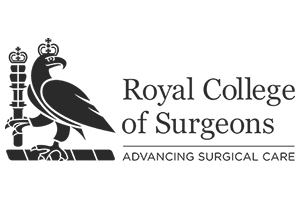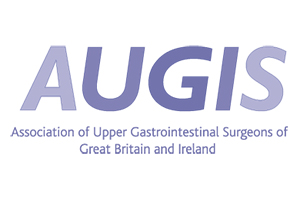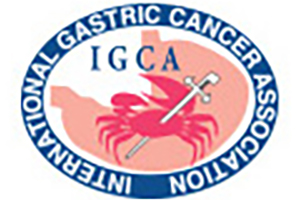There are two main ways surgery for hernias can be carried out:
- open surgery – where one cut is made to allow the surgeon to push the lump back into the abdomen
- keyhole (laparoscopic) surgery – this is a less invasive, but more difficult, technique where several smaller cuts are made, allowing the surgeon to use various special instruments to repair the hernia
Most people are able to go home the same day or the day after surgery and make a full recovery within a few weeks. The different approaches for each type of hernia are outlined below:
An inguinal hernia repair can be carried out as either open surgery or laparoscopic (or keyhole) surgery. The hospital will send you instructions about when you need to stop eating and drinking before the operation. The operation usually takes about 30 to 45 minutes to complete and you’ll usually be able to go home on the same day.
OPEN SURGERY
Open inguinal hernia repair is often carried out under local anaesthetic or a regional anaesthetic injected into the spine. This means you’ll be awake during the procedure, but the area being operated on will be numbed so you won’t experience any pain. In some cases, a general anaesthetic is used. This means you’ll be asleep during the procedure and won’t feel any pain.
Once the anaesthetic has taken effect, the surgeon makes a single cut (incision) over the hernia. This incision is usually about 6 to 8cm long. The surgeon then places the lump of fatty tissue or loop of bowel back into your abdomen (tummy). A mesh is placed in the abdominal wall, at the weak spot where the hernia came through, to strengthen it. When the repair is complete, your skin will be sealed with stitches. These usually dissolve on their own over the course of a few days after the operation. If the hernia has become strangulated and part of the bowel is damaged, the affected segment may need to be removed and the 2 ends of healthy bowel rejoined.
This is normally a daycase procedure, however in some circumstances you may need to stay overnight.
LAPAROSCOPIC (KEYHOLE) SURGERY
General anaesthetic is used for keyhole inguinal hernia repair, so you’ll be asleep during the operation. During keyhole surgery, the surgeon usually makes 3 small incisions in your abdomen instead of a single larger incision. A thin tube containing a light source and a camera (laparoscope) is inserted through one of these incisions so the surgeon can see inside your abdomen. Special surgical instruments are inserted through the other incisions so the surgeon can pull the hernia back into place.
There are 2 types of keyhole surgery.
Transabdominal preperitoneal (TAPP)
Instruments are inserted through the muscle wall of your abdomen and through the lining covering your organs (the peritoneum). A flap of the peritoneum is then peeled back over the hernia and a piece of mesh is stapled or glued to the weakened area in your abdomen wall to strengthen it.
Totally extraperitoneal (TEP)
This is the newest keyhole technique and involves repairing the hernia without entering the peritoneal cavity. Once the repair is complete, the incisions in your skin are sealed with stitches or surgical glue.
However, regional or local anaesthetic is sometimes used for open surgery. This means you’ll be awake during the procedure, but the area being operated on will be numbed, so you won’t experience any pain. The operation should take about 30 to 45 minutes to complete and you’ll usually be able to go home the same day. Some people stay in hospital overnight if they have other medical problems or if they live alone.
OPEN SURGERY
During open surgery to repair a femoral hernia, the surgeon makes a single cut (incision) in your lower tummy or over the hernia. This incision is usually about 3 to 4cm long. The femoral canal (a channel containing the main blood vessels and nerves leading to the thigh) is opened and the surgeon places the lump of fatty tissue or loop of bowel back into your tummy. The femoral canal is then closed, often with a mesh plug, to repair the weak spot that let the hernia through.
The incision in your skin is then sealed with stitches. These usually dissolve on their own over the course of a few days after the operation. If the hernia has become trapped (strangulated) and part of the bowel damaged, the affected segment may need to be removed and the ends of healthy bowel rejoined. This is a bigger operation and you may need to stay in hospital for a few days.
LAPAROSCOPIC (KEYHOLE) SURGERY
During keyhole surgery to repair a femoral hernia, several very small incisions are usually made instead of a single, larger incision. A thin tube containing a light and a camera (laparoscope) is inserted through 1 of the incisions, so the surgeon can see inside your tummy.
Special surgical instruments are inserted through the other incisions, so the surgeon can pull the hernia back into place. As with open surgery, a mesh patch is often used to strengthen the weak spot in the tummy where the hernia came through. Once the repair is complete, the incisions in your skin are sealed with stitches or surgical glue.
The hospital will send you instructions about when to stop eating and drinking before the operation. In most cases, the operation is carried out under general anaesthetic. This means you’re unconscious during the procedure and won’t feel any pain as it’s carried out.
THE PROCEDURE
During umbilical hernia repair, the surgeon makes a small cut of about 2 to 3cm at the base of the belly button and pushes the fatty lump or loop of bowel back into the tummy. The muscle layers at the weak spot in the abdominal wall where the hernia came through are stitched together to strengthen them. For large or adult umbilical hernias, a special mesh patch may be placed in the abdominal wall to strengthen the area instead.
The wound on the surface of the skin is closed with dissolvable stitches or special surgical glue. Sometimes, a pressure dressing is applied, which usually stays on for 4 to 5 days.
The Hernia Surge group are made of international hernia experts from every continent. These guidelines were published January 2018 with the aim of improving patient outcomes by reducing the risk of recurrence and the risk of chronic groin pain. The guidelines are extensive but these are some of what we think are the most important points:
- Factors associated with a higher risk of recurrence include poor surgical technique, low surgeon volume/experience and local anaesthetic approaches.
- It is recommended that all symptomatic hernias are repaired electively, as outcomes of emergency repair are poorer. Hernias in men which cause few or no symptoms can be safely managed without surgery but these patients eventually become symptomatic.
- A mesh repair is recommended over suture repairs. This is because the recurrence rate is lower with a mesh repair.
- Provided the surgeon has expertise in the technique, keyhole surgery for groin hernias has a faster recovery time, lower risk of chronic groin pain and is cost effective.
- In a keyhole operation, mesh fixation (with tacks) is only recommended for hernia with a large defect to reduce the risk of recurrence. Otherwise it is not necessary.
- Antibiotics at the time of surgery are not recommended for keyhole surgery, and only in high risk patients having open repairs.
- There is a learning curve in keyhole surgery and probably 100 repairs need to be carried out to be achieving the same outcomes as open surgery.
If you come to see us for a consultation, we will discuss these guidelines with you and explain the relevant sections for your particular case.
NICE issued guidance on the use of keyhole techniques in repair of groin hernias in 2004. At that time the techniques were relatively new and there was one study that seemed to present conflicting evidence. Most data suggested at that time that keyhole surgery resulted in a quicker return to normal activities, reduced numbness, reduced pain at 1 year, reduced complications and a similar risk of recurrent hernia (1.5-2.5%). Due to the resulting uncertainty, NICE recommended keyhole surgery for the repair of hernias on both sides simultaneously, as well as for recurrent hernias. NICE suggested that the choice of surgical approach for first time one-sided hernias can be left for discussion between surgeon and patient, taking available expertise and patient wishes into account.
- Lichtenstein Versus Total Extraperitoneal Patch Plasty Versus Transabdominal Patch Plasty Technique for Primary Unilateral Inguinal Hernia Repair. A large, registry based European study published in February 2019 directly compares these two approaches. Köckerling, Ferdinand, MD*; Bittner, Reinhard, MD†; Kofler, Michael‡; Mayer, Franz, MD; Adolf, Daniela, PhD; Kuthe, Andreas, MD; Weyhe, Dirk, MD. Annals of Surgery: February 2019 – Volume 269 – Issue 2 – p 351–357.
The above study was published in February 2019 and directly compares these two approaches, in over 55000 patients. The authors suggest that recovery times and pain scores are lower after keyhole surgery, supporting a role for the keyhole approach for all first-time groin hernias.
SPECIALIST UPPER GI SURGERY have expertise in both keyhole and open techniques to repair not only groin hernias, but other types of abdominal wall hernias. We can discuss this evidence and help you choose the most appropriate method of repair for your hernia.
Meshes are fixed generally to avoid them moving out of position in the early post-operative period, thereby allowing a recurrent hernia to form. In the open technique, meshes are traditionally stitched in with permanent sutures. In keyhole repairs, meshes are usually held in place by tacks. These can be titanium or plastic and are permanent. Newer tacks are made of an absorbable material that disappears 6-12 months post-operatively.
However, all types of tack penetrate into the muscle and potentially can injure nerves.
At SPECIALIST UPPER GI SURGERY, we have switched to recommending the use of Pro-grip meshes, which have been available for over 5 years. These double sided meshes have a normal light weight mesh on one side, and what looks like “velcro-like” barbs on the other, again made of an absorbable material. There is a growing body of evidence (examples below) suggesting these meshes have low recurrence rates (0-1.5%) and are associated with less chronic pain that more traditional light weight meshes tacked in place.
- Surg Endosc. 2015 Sep;29(9):2690-6. doi: 10.1007/s00464-014-3991-y. Epub 2014 Dec 18. Progrip with no recurrence or chronic pain after 1 year. Use Carolinas Comfort Scale
- 2013 Jun;17(3):313-20. doi: 10.1007/s10029-013-1053-3. Epub 2013 Feb 15.. 220 patients with progrip, 1.4% recurrence, 1.2% severe pain, 3.6% mild pain at 2yrs.
Obviously, recovery times depend on the type of hernia repair you are having done (see above).
In general, however, most people who have open hernia repair surgery are able to go home the same day. Recovery time is about 2 weeks. You most likely can return to light activity after 2 weeks. Strenuous exercise should wait until after 4 weeks of recovery.
Driving instructions
Patients should not drive for at least 1 week after hernia surgery.
Patients who have recovered well should then confirm they can comfortably wear a seatbelt, look in blind-spots and do an emergency brake.
Patients should then inform their insurance company about their surgery and recovery before re-commencing driving.
Most patients having either open or keyhole repair of a groin hernia can go home the same day, providing a responsible adult can collect them and stay with them overnight. As the majority of our theatre lists are on a Monday evening, for convenience, most patients elect to stay at the Spire Hospital overnight.
After groin hernia surgery, we recommend a graded recovery period that aims to get patients back to normal activities and exercise levels by 4 weeks post-operatively.
1. Week 1
There will be some discomfort and perhaps some bruising in the first week after surgery.We have found that the Progrip mesh we use can cause a slightly more intense pain in the first 12 hours, but settles quickly after that. The painkillers you are given can deal with this pain easily. The bruising can extend into the scrotum, so do not worry if this happens as it will settle in time.
Please do take the painkillers provided on your discharge so that you are able to maintain normal daily activities such as walking around, washing, dressing etc.
You should not lift anything heavier than a full family-sized kettle.
You can walk distances up to a mile, but avoiding steep hills or climbing styles/fences.
2. Week 2
The pain should have settled by now and you should be able to go back to driving, having informed your insurer of your operation/recovery.
Continue to avoid lifting anything heavier than a big shopping bag.
Continue walking on flat terrain, avoiding fences/styles, but extending your distance to whatever you are comfortable with.
Resist the urge to extend the amount of exercise you do in this week.
3. Week 3-4
You can commence gentle running/jogging, slowly extending the distance during this 2 week block. Initially, avoid hills.
You can start swimming, but avoid breast stroke in this 2 week block (this relates to the stretching of the hip joint out which can distort the mesh position early on). In your first week, consider looking at Total Immersion Swimming (http://www.totalimmersion.co.uk/) as a technique that will minimise the impact of swimming on your groin.
Cycling short distances, again avoiding hills can be achieved if care is taken with mounting the bike.
During this period, despite gradually increasing the amount of exercise you do, you should still avoid lifting anything heavier than a large shopping bag.
Advice for racket sports varies depending on the sport and your baseline skill level. In general, we would advise leaving all racket sports out until after 4 weeks, due to the frequent stretching and sudden movement changes involved. If played at a high level, it may be prudent to just do rallies in weeks 4-6 before re-introducing competitive play.







